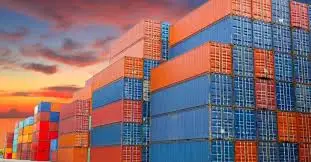Is the container shipping boom preparing to backfire?
According to Sea-Intelligence’s latest Sunday Spotlight (Issue 734), the global container shipping industry is heading into a structural oversupply phase. Their model—adjusted for operational realities—suggests overcapacity may peak by 2027, reaching levels not seen since the brutal 2016 price wars.
How They Got Here: Supply vs Demand + Real-World Adjustments
To forecast the supply/demand balance, Sea-Intelligence built a baseline comparing nominal vessel capacity growth against container demand (linked to GDP growth). Then they layered on four critical corrections to make the outlook more realistic:
- Long-term vessel slowdown (ships aging, moving slower)
- Port congestion effects
- Capacity absorption during the Red Sea crisis
- Projected vessel scrapping of older tonnage
The result? A shift from scarcity to overcapacity territory. The corrected model anticipates the industry will slide back into surplus.
On the demand side, they assumed a post-crisis rebound: the Red Sea disruptions will ease by mid-2026, freeing up capacity previously sidelined. But that assumption carries risk.
Assumptions, Risks & Wildcards
Sea-Intelligence stresses that the projection comes with caveats:
- Timing of Red Sea resolution is crucial. If the crisis lingers, the “absorption” effect continues, pushing out overcapacity.
- Vessel scrapping rates must accelerate. Their forecast assumes that by 2026, operators will phase out ~13% of the fleet (mostly vessels 20+ years old).
- Demand headwinds like U.S. trade wars or global macro slowdown could erode the projected GDP-driven demand. Add more new builds and the surplus worsens.
In short: the forecast isn’t destiny—but it’s a flashing warning signal.









